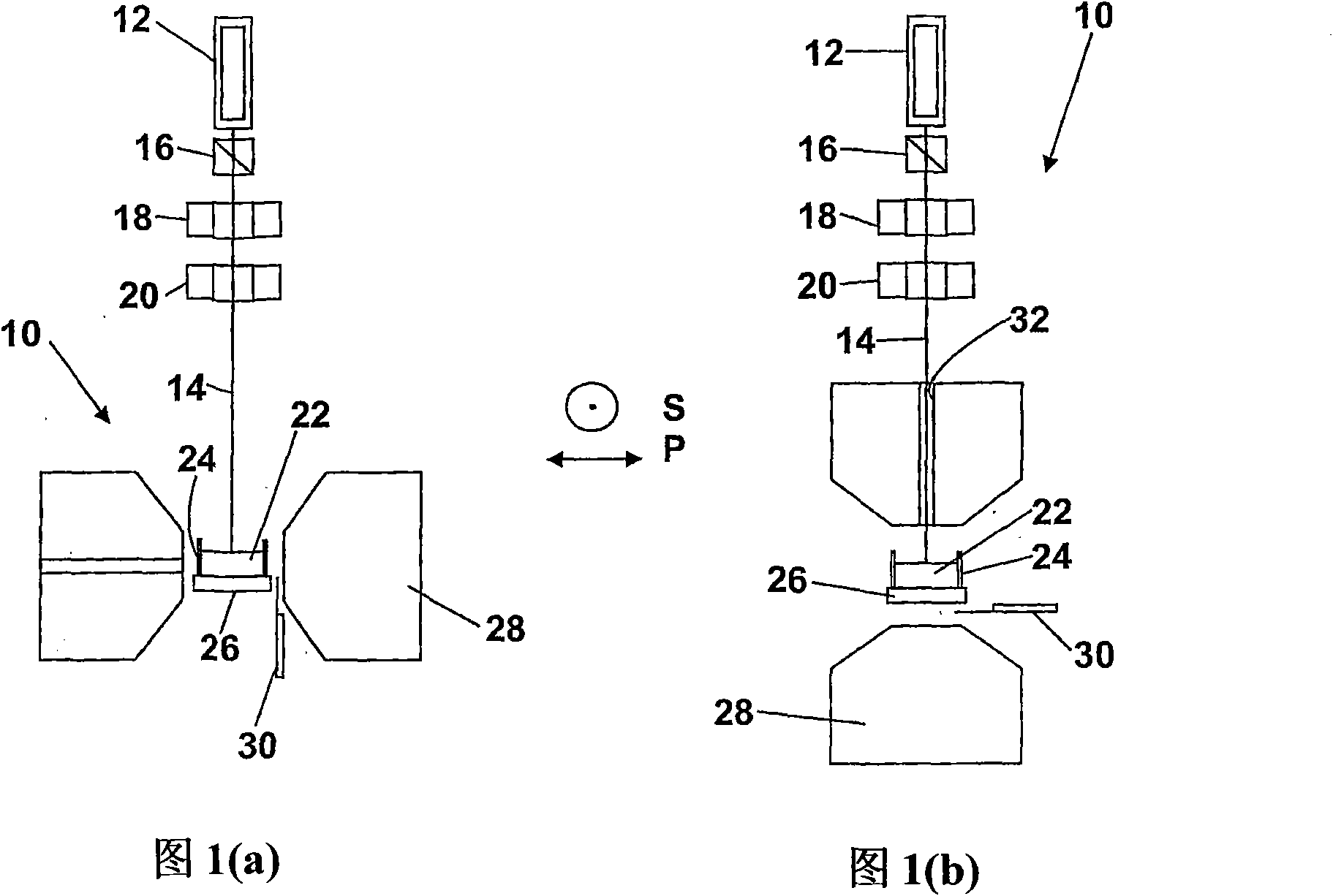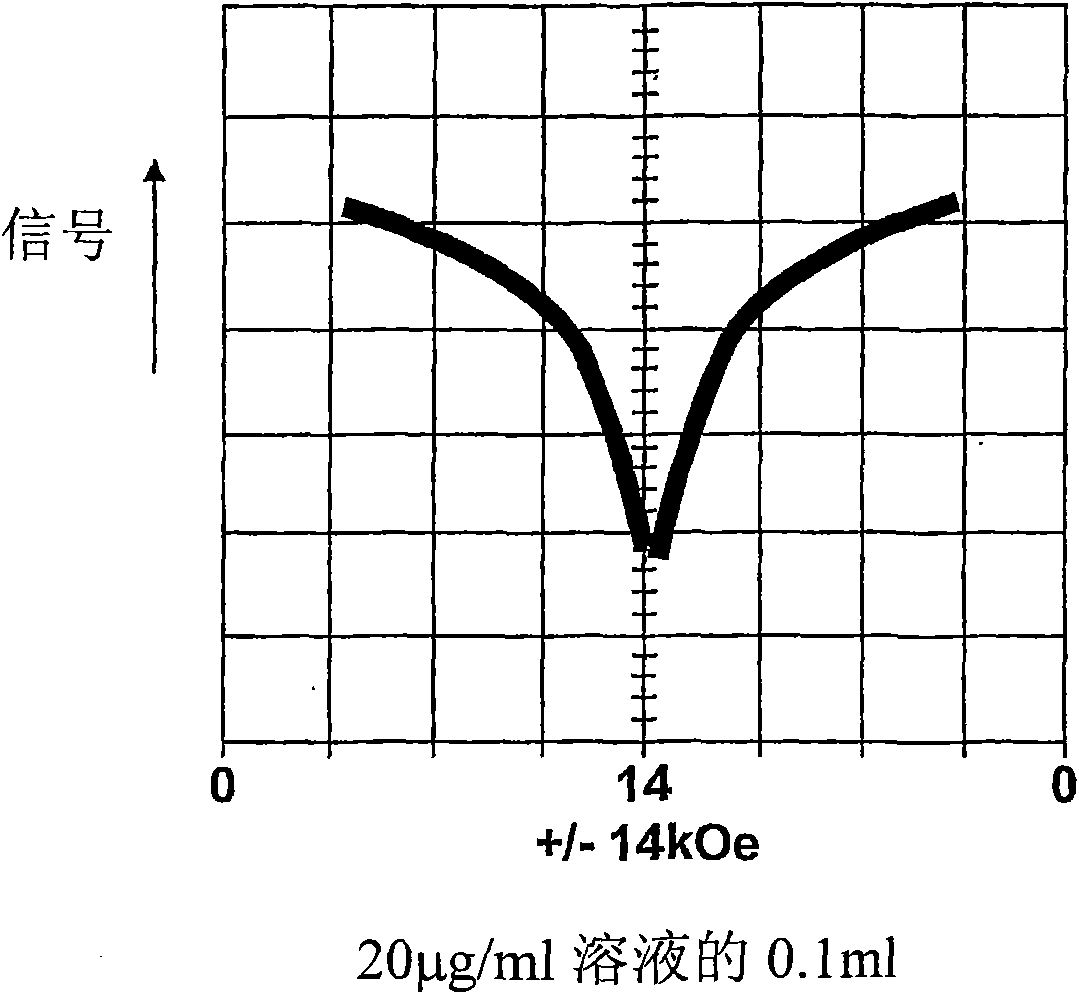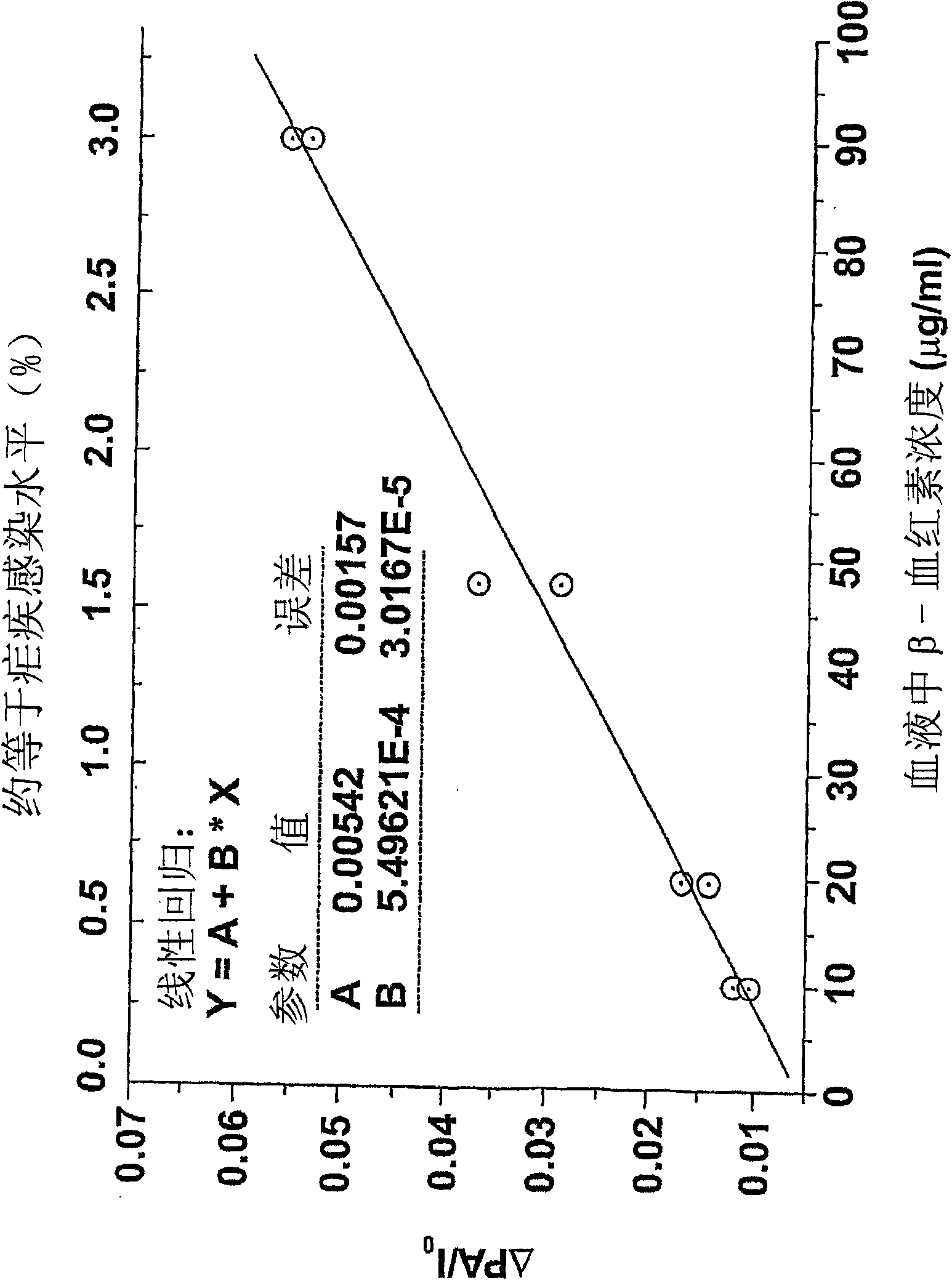Devices and methods for detecting ss-haematin and haemozoin
A detection device, hemoglobin technology, applied in the direction of measuring device, diagnostic recording/measurement, diagnosis using light, etc., can solve the problems of expensive, limited use, non-quantifiable, etc.
- Summary
- Abstract
- Description
- Claims
- Application Information
AI Technical Summary
Problems solved by technology
Method used
Image
Examples
Embodiment Construction
[0070] An important aspect of the invention is its use in the detection of Plasmodium, although the invention is applicable to the detection of malaria pigments and beta-heme itself. The malaria parasite enters the erythrocyte (red blood cell) and converts the hemoglobin into malarin, changing its magnetic state in the process. The red blood cells then rupture, releasing malaria pigment into the plasma, while the malaria parasite continues to infect the red blood cells. The present inventors have found that it is possible to detect malaria parasites by detecting the presence of malaria pigments in blood.
[0071] In some particularly preferred embodiments, changes in the magnetic state of hemoglobin caused by malarial infection are exploited by detecting the proper properties of the malaria pigments, which depend on the application of a magnetic field.
[0072] In a preferred embodiment, photoacoustic detection is used. Advantages associated with this approach are that in vi...
PUM
| Property | Measurement | Unit |
|---|---|---|
| wavelength | aaaaa | aaaaa |
Abstract
Description
Claims
Application Information
 Login to View More
Login to View More - R&D
- Intellectual Property
- Life Sciences
- Materials
- Tech Scout
- Unparalleled Data Quality
- Higher Quality Content
- 60% Fewer Hallucinations
Browse by: Latest US Patents, China's latest patents, Technical Efficacy Thesaurus, Application Domain, Technology Topic, Popular Technical Reports.
© 2025 PatSnap. All rights reserved.Legal|Privacy policy|Modern Slavery Act Transparency Statement|Sitemap|About US| Contact US: help@patsnap.com



